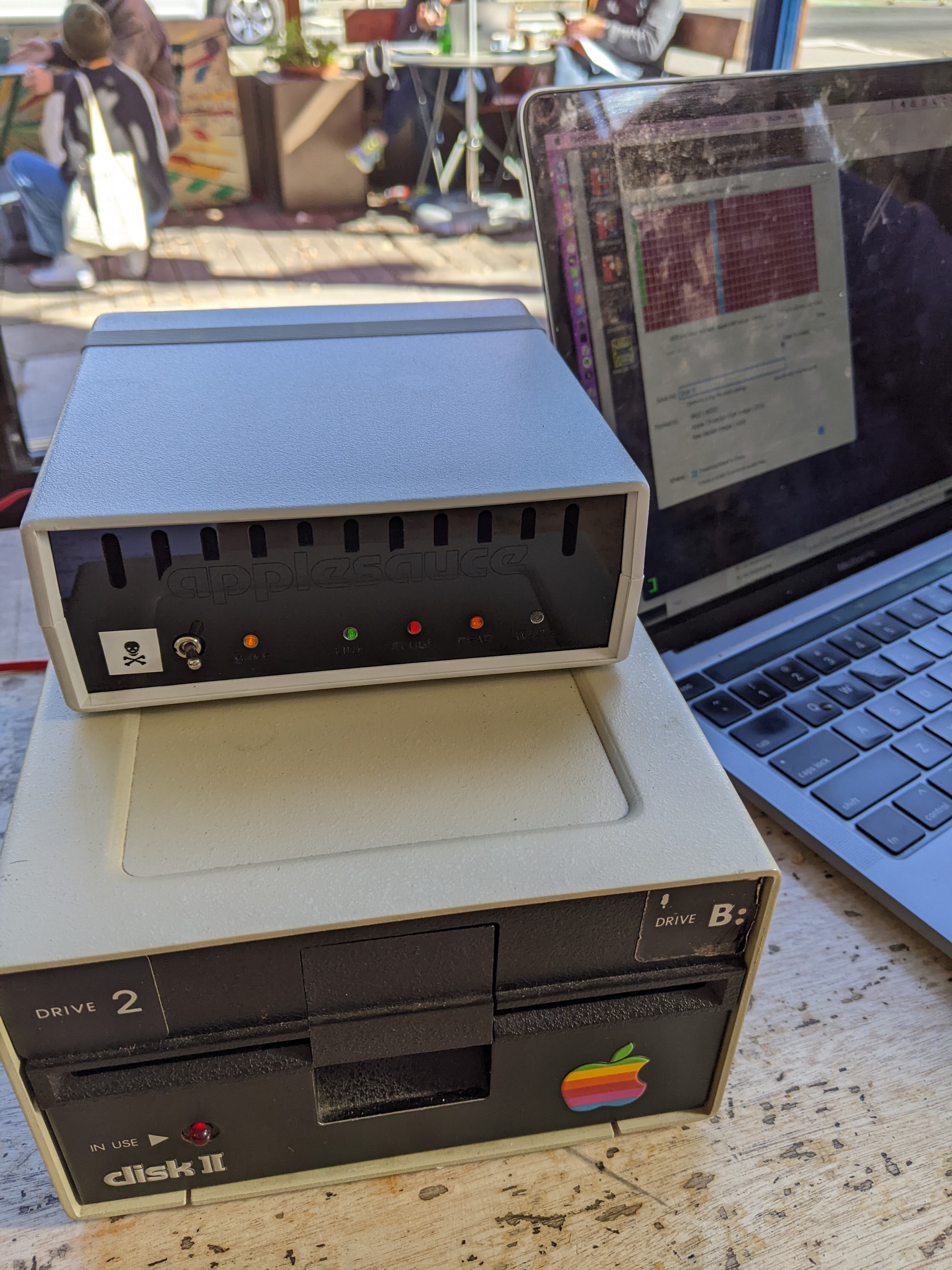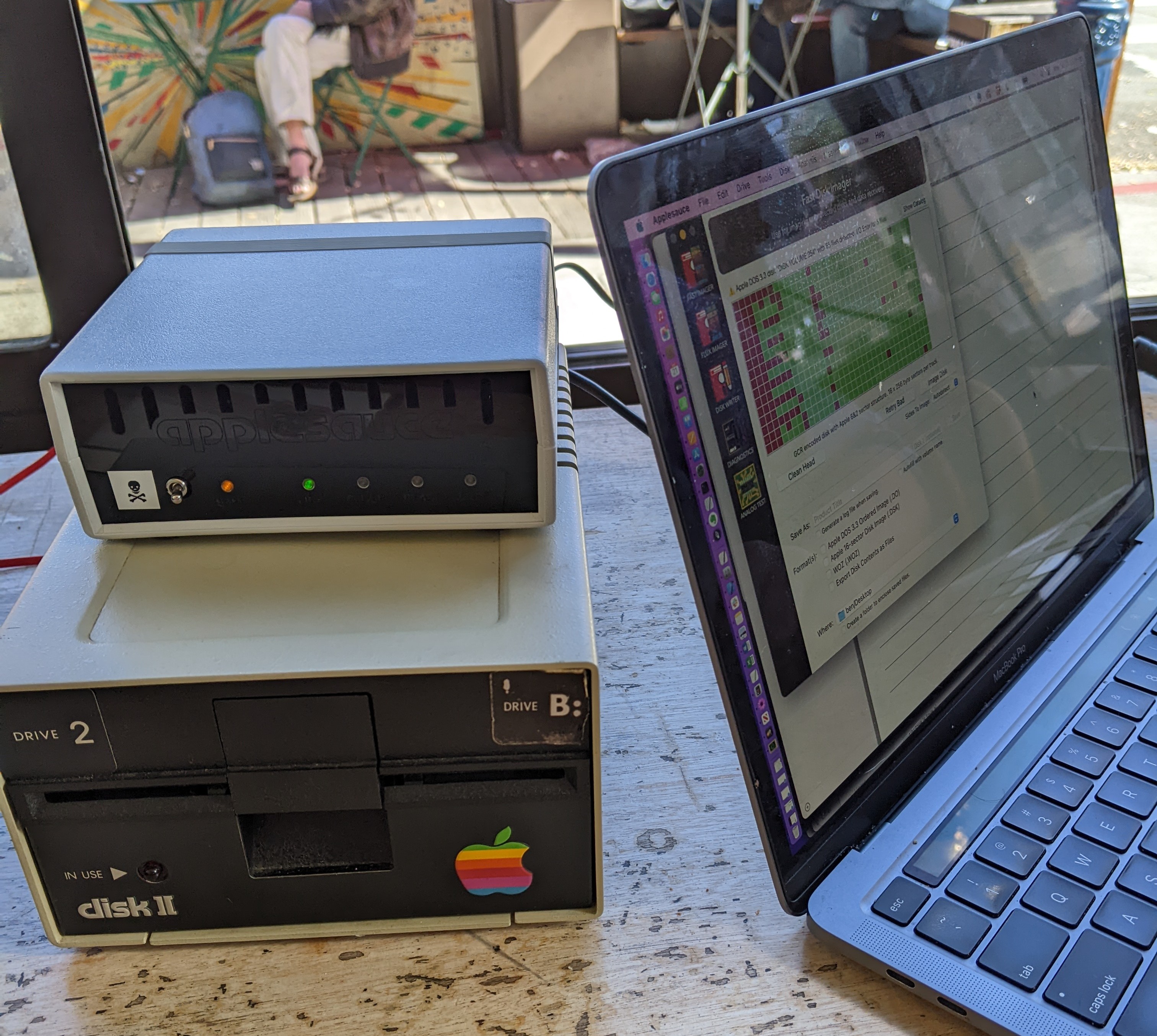Recovering the old game
As mentioned in Bringing the clunker back to life, the original motivation was to resurrect a game that I wrote in high school. I was obsessed with Ultima, beginning with The First Age of Darkness, and so spent countless hours developing my own version.
The game logic was written in BASIC but this was much too slow for the graphics. Therefore, I convinced my parents to drive me to a remote bookstore to pick up a book on Apple ][ assembly (there were not a lot of resources in those early days) and then taught myself how to develop assembly subroutines that could be called from BASIC. I had a 2D array which I used as a map and then moved hand-crafted images directly to the graphics memory as the character moved around. This already difficult process was more complicated by the fact the computer’s graphics memory was interleaved and the Apple CPU didn’t have a multiply command. Fortunately, the book offered a routine that would accomplish this with bit shifting and addition.
Side note: After all these years, only today did I learn that Richard Garriott (aka Lord British) coded Ultima in BASIC while his friend Ken Arnold “wrote code in assembly language for the tile-based graphics system, the first game in the genre to do so.”
To this day I’m pretty proud of this little piece of computer wizardry and would love to see it again.
Alas, this is not to be.
Box of floppies
Buried in my parent’s garage for decades, alongside the old Apple ][+, was a box of 5.25” floppy disks. Was my game still on one of them?

For some unknown reason, my high school brain decided to just number the floppies, as opposed to just writing the contents on the stickers. I used to have a sheet that listed the contents of each disk, but that is long gone. Additionally, judging by the enumeration, it looks like some of the floppies are missing. I vaguely recall taking some to college. Was the game on one of them? Perhaps.
A glimmer of hope on Twitter
I don’t recall how I came across @bzotto’s Twitter thread about how he resurrected his high school game by reconstructing the data from an old 5.25” floppy, but it renewed my hope. He purchased some specialized hardware that repeatedly moved the drive head back and forth by fractions of a track to try to pull off enough magnetic signal to reconstruct the data.
Turns out @bzotto is a great guy and extremely generous with his time, so when I reached out with my story he offered to help.
Coffee shop excavation
In February 2022 we met at a coffee shop near his home. I brought the box of floppies and he brought the hardware and his Mac laptop. We spent three hours chatting as we tried one floppy after another.
The floppies almost always started with a bunch of red squares. His software would make an initial pass to see what could be read, and typically that was not very much. The floppy had been sitting in a damp, cold garage for decades and most of the magnetic material had degenerated or fallen off. It did not help matters that I purchased inexpensive, single density floppies in high school, and then recorded on both the front and back. It worked fine back then, but I was clearly not thinking long term.

As we patiently allowed the hardware and software to do its magic, something incredible happened. The red squares became green! Not all of them, but enough for us to identify what, if anything, was on the floppy. We were primarily interested in the catalog which, if memory serves correctly, was on track 14. I had a few floppies that I used for personal development, so the catalog would enable us to find these.

Disappointment
Unfortunately, the old game floppy was not to be found. We were able to identify the contents of every floppy we tried, but the game wasn’t there. As they closed up the coffee shop there were still a handful of floppies remaining. @bzotto graciously offered to check them out at home, but no luck. In high school I had many printouts of my code, but we never saved them. It’s also disappointing that I never made a copy, but this is not how young people think. I’ll have to be satisfied with just the memory of what I put together.
What was the name of this game? In case anyone’s curious, I never got that far. If I remember correctly, the name of the main file was just “game”.
What next?
Nevertheless, I now have a functional Apple ][+ computer sitting on my desk. I don’t have much time to devote to tinkering with an ancient piece of hardware, but it would be cool to see if I could run some modern machine learning algorithms on it. I’ll be giving that some thought and will see what I can do…

 Google Scholar
Google Scholar
Leave a Comment